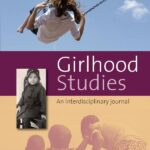 GIRLHOOD STUDIES. An Interdisciplinary Journal (Web)
GIRLHOOD STUDIES. An Interdisciplinary Journal (Web)
Proposals by: 13.02.2023
Forced displacement, migration, and (re)settlement, both within nations and across borders, is an ever-escalating crisis affecting tens of millions of people worldwide. The United Nations High Commissioner for Refugees reports that at the start of 2022, over 100 million people had been forcibly displaced from their homes because of persecution, conflict, violence, or human rights violations (2022a). Added to these numbers are the millions displaced each year because of disaster and the devasting, unabating effects of climate change (Internal Displacement Monitoring Centre 2022; United Nations High Commissioner for Refugees 2022b). While exact numbers remain elusive, it is estimated that women and girls account for just over half of all those displaced by conflict and violence (United Nations High Commissioner for Refugees 2022a) and account for an even greater proportion of those displaced by disaster and climate change (Internal Displacement Monitoring Centre 2022; United Nations High Commissioner for Refugees 2022b). Research consistently identifies women and girls as vulnerable and, in comparison with their male counterparts, disproportionately at risk of physical and sexual violence, domestic abuse, kidnapping, trafficking and sexual exploitation, and early and forced marriage (Noble et al. 2017).
This portrait of vulnerability and disadvantage, while unquestionably concerning and essential to providing grounds for international and local responses to the plight of displaced women and girls, provides but a partial view. Grouping women and girls into a single category contributes to a homogenizing discourse that glosses over the particular experiences of girls facing forced displacement, migration, and (re)settlement. Further, such a portrait leaves unexamined the diverse and uneven experiences and expressions of girls‘ intersectional identifications. And finally, a concentration on vulnerability, victimization, and disadvantage risks obscuring the potential, capacities, resilience, strengths, autonomy, and voices of girls on the move. Read more … (PDF)
Source: H-Net Notifications
